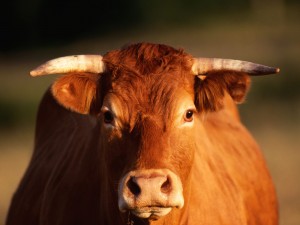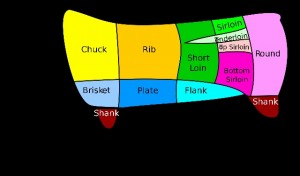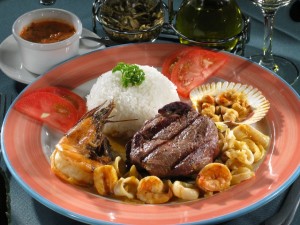When ordering a steak in the United States, do you know the difference between a boneless top sirloin, boneless club steak, Kansas City steak, New York Strip, and an Ambassador steak? The answer is that there is none. The same cut of meat has a different name depending on your location (whether you are in Kansas City, New York, or somewhere in between).

What if you are in Ecuador? How do you order a Kansas City steak in Quito? Or a prime rib in Cuenca? If the same cut of meat can have several names in English, can it also have several in Spanish? Absolutely.
A prime rib in Ecuador can be called "entrecot" but in Argentina it is called "bife ancho con costilla," and in Chile it is known as "lomo vetado con costilla." Even within Ecuador, the name of certain cuts of meat can vary from region to region. According to the "Super Guía de la Carne," a comprehensive guide to meat, produced by the Ecuadorian supermarket chain, Supermaxi, a flank steak in Quito may be the falda or vacio, but in Ibarra the same cut of meat may be called achulla. Furthermore, in Loja it can be called salón, and in Manta, tocineta.
In today's Dining Out page we offer our readers a few beef basics.
PRIMAL CUTS & STEAKS
The primal cuts of a cow are divided into upper cuts (chuck, rib, loin, and round) and lower cuts (brisket, shank, plate, and flank).

The primal cuts can then be further divided. The loin, for example, is where we get short loin, sirloin, and tenderloin. The sirloin can be further cut into top sirloin or bottom sirloin. The boneless tenderloin is where we get the filet mignon (or lomo fino, in Ecuador), but if the bone remains then we called it a T-bone or Porterhouse steak (It is also commonly known as a T-bone in Ecuador).
QUALITY & GRADING
In the U.S. you have probably heard of Grade A beef, but what does that mean? It refers to the age of the cattle. Most cattle are Grade A, meaning they are between 9-30 months of age when slaughtered. The tenderness of meat is related to the age of a cow. Young is tender. Old is tough.
Additionally, the tenderest of cuts are furthest away from the areas of movement of the animal. Generally, upper cuts, along the back, are tenderer than lower cuts and therefore should be prepared differently.
We also need to consider "marbling" (marmoleo in Spanish), or the amount of fat contained within the muscle, another factor in grading meat. The amount of marbling is indicated by the descriptions: prime, choice, or select cut.
Prime cuts of meat have the most marbling (high marbling) and are the rarest and most expensive. After prime are the choice cuts, which represent about half of the meat from a cow. Finally, select cuts are the lowest grade you generally find available for purchase. Cuts that are lower than select are used for processors and canners (think of hotdogs and spam).
COOKING
There are a number of ways to prepare beef, which is often dictated by the cut.
Grilling seals in natural juices. This is best for premium or high-marbling cuts. Roasting is a dry heat, uncovered method for cooking, which works well for many steaks, both premium and less tender cuts. Braising uses moist heat in a covered pot and should be used for tougher cuts of meat such as brisket. Sautéing is a quick high-heat method using oil and is good for many different tender cuts. Baking is a dry heat method suggested for ground beef only, and broiling is a direct flame or high heat method for premium cuts.
Whether you are grilling or broiling it is important to understand how well you should cook your meat. This is generally a question of preference and is indicated by our degrees of doneness scale below.
Sources for this article: The Certified Angus Beef Association, USDA, www.gourmetsouth.com, and San Telmo Steak House of Quito.
LOMO A LO MACHO - BY SAN TELMO STEAKHOUSE

INGREDIENTS
250 grams of tenderloin
500 grams of shrimp
500 grams of squid
500 grams of prawns
1 scallop
200 CC of white whine
10 grams of red onion
5 grams of aji mirasol
5 grams of aji panca
1 stick of parsley
Salt and pepper
PRREPARATION
Grill or broil the tenderloin to the degree of doneness desired. Cut the red onion into quadrants, place in frying pan, and add a touch of aji "mirasol" and aji "panca". Add the prawns and scallops first, followed by the squid and small shrimp, previously salted and peppered. Finally, add white wine and shrimp. Bathe the tenderloin in the seafood sauce and decorate with parsley.
DID YOU KNOW
An average steer with a market of 1,150 lbs will yield approximately 569 lbs. of red meet and trim. Of this, only seven pounds (1%) are tenderloin. Source: www.gourmeslouths.com